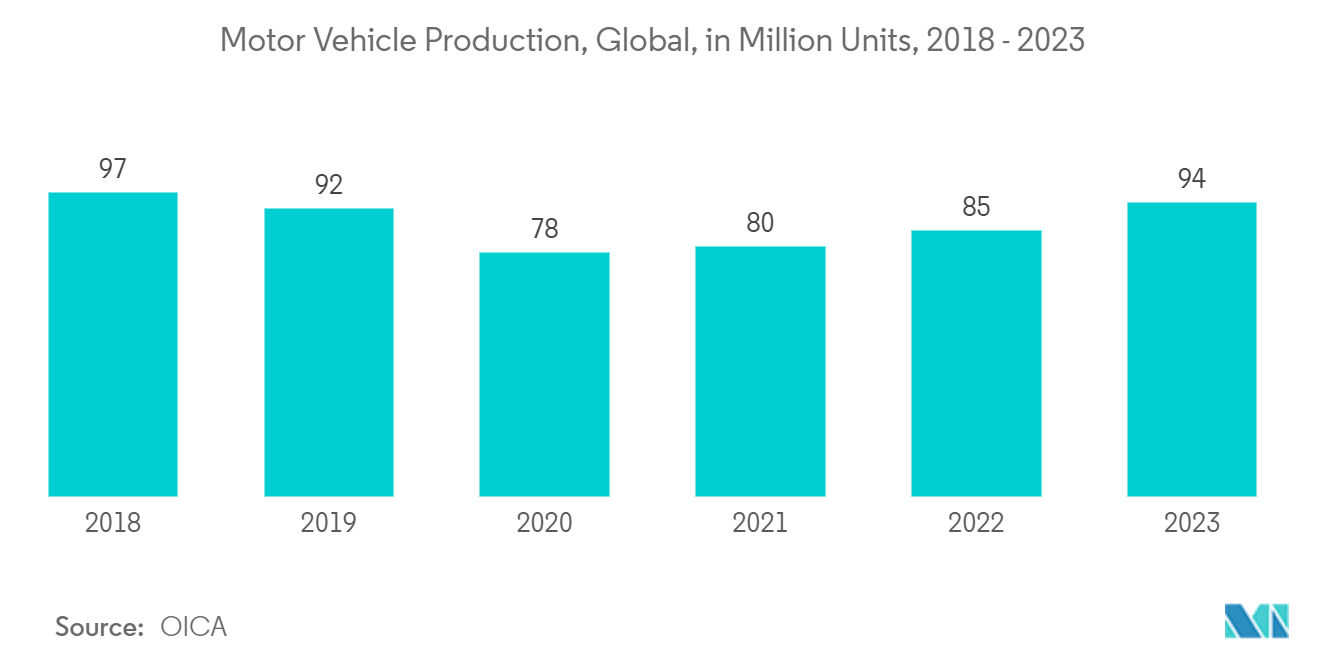Market Trends of LED Chips Industry
Automotive is Expected to Hold Major Market Share
- Vehicle manufacturing is on the rise around the world, which has a positive impact on the automotive lighting industry. The increasing production of electric automobiles heavily influences the automotive lighting market's revenue due to lower fuel costs and less harmful environmental emissions. As ambulances and police cars increasingly rely on lighting systems for signaling purposes, the demand for quality vehicle lighting solutions has increased. Furthermore, government regulations pertaining to road safety also encourage automobile manufacturers to adopt quality lighting solutions such as LEDs.
- According to the central government of China, by 2025, the country's automobile production is anticipated to reach 35 million units. With the growth in automobile production, the need for LED chips is expected to increase, which in turn is anticipated to impact the studied market's growth positively.
- Similarly, increasing global automotive production drives the demand for automotive LED chips. For instance, according to OICA, in 2023, some 94million motor vehicles were produced worldwide. This figure translates into an expansion of around 6 percent compared with the previous year.
- Considering the growing demand, vendors are launching innovative solutions. For instance, in May 2024, Daktronics launchedits latest Flip-Chip COB (Chip On Board) LED display technology. This new addition to Daktronics' Narrow Pixel Pitch (NPP) product range features pixel spacings as tight as 0.9 millimeters, offering enhanced durability, reliability, and reduced power consumption. These advancements are designed to elevate the customer experience.. Such developments will further drive the studied market's growth.
- LED lamps mainly consume only one-tenth of the electricity an incandescent lamp consumes. In this context, the European Union has officially recognized LED headlamps as energy-efficient. Hence, companies like OSRAM offer a broad range of LEDs for the automotive industry; for example, Audi is using OSRAM LEDs in the headlights of a new model of the Audi A8. For general lighting, OSRAM has almost all SMD LEDs from 0.1W to 5W in all dimension packages, i.e., 3030, 5050, 5630, 2835, and others.

Asia-Pacific is Expected to Witness the Highest Growth Rate
- The Asia-Pacific region has a good demand for consumer electronics and automobiles, where rapid technological changes result in high performance. As a result, the need for increased and medium-power LEDs is expected to rise. Given rising disposable income, rapid urbanization, and a shift in spending habits, the region has been the largest market for consumer electronics and is among the leading adopters of LED chips. For instance, according to IBEF, the Indian consumer electronics industry was valued at USD 9.84 billion in the previous year and is expected to more than double to INR 1.48 lakh crore (USD 21.18 billion) by 2025.
- Furthermore, the Indian government is actively introducing initiatives to move the country further along the path of transforming illumination and energy efficiency. For Instance, EESL intends to attract investments totaling INR 8,000 crores (USD 1.09 billion) under the Street Lighting National Programme (SLNP) by 2024, covering rural India. The company plans to install and retrofit approximately 30 million LED streetlights. Such investment will further drive the market's growth.
- Similarly, in November 2022, Pune Municipal Corporation (PMC) announced its plan to invest approximately INR 20 crore (USD 2.420 million) in replacing about 27,500 old public light fixtures. Such initiatives by various governments of different regions and countries across the region are expected to promote the adoption of LED lighting solutions, creating a favorable outlook for the growth of the studied market.
- Although the adoption of LED lighting solutions is on the rise, the recent US-China trade dispute has hampered the LED chip manufacturing industry in China. For instance, in January 2023, countries like the Netherlands and Japan also joined the United States in restricting the exports of semiconductor manufacturing equipment to China. However, in recent years, some of the Chinese chip manufacturing companies have been able to make positive progress in developing their chip manufacturing capabilities, which is anticipated to positively impact the studied market's growth in China during the forecast period.


